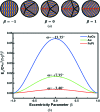Understanding the formation of multiply twinned structure in decahedral intermetallic nanoparticles
- PMID: 31098025
- PMCID: PMC6503919
- DOI: 10.1107/S2052252519002562
Understanding the formation of multiply twinned structure in decahedral intermetallic nanoparticles
Abstract
The structure of monometallic decahedral multiply twinned nanoparticles (MTPs) has been extensively studied, whereas less is known about intermetallic MTPs, especially the mechanism of formation of multiply twinned structures, which remains to be understood. Here, by using aberration-corrected scanning transmission electron microscopy, a detailed structural study of AuCu decahedral intermetallic MTPs is presented. Surface segregation has been revealed on the atomic level and the multiply twinned structure was studied systematically. Significantly different from Au and Cu, the intermetallic AuCu MTP adopts a solid-angle deficiency of -13.35°, which represents an overlap instead of a gap (+7.35° gap for Au and Cu). By analysing and summarizing the differences and similarities among AuCu and other existing monometallic/intermetallic MTPs, the formation mechanism has been investigated from both energetic and geometric perspectives. Finally, a general framework for decahedral MTPs has been proposed and unknown MTPs could be predicted on this basis.
Keywords: aberration-corrected scanning transmission electron microscopy; disclinations; intermetallic nanoparticles; multiple twinning.
Figures





References
-
- Bagley, B. G. (1965). Nature, 208, 674–675.
-
- Chen, W., Yu, R., Li, L., Wang, A., Peng, Q. & Li, Y. (2010). Angew. Chem. Int. Ed. 49, 2917–2921. - PubMed
-
- Clarke, R. S. & Scott, E. R. (1980). Am. Mineral. 65, 624–630.
-
- Dundurs, J., Marks, L. D. & Ajayan, P. M. (1988). Philos. Mag. A, 57, 605–620.
-
- Elechiguerra, J. L., Reyes-Gasga, J. & Yacaman, M. J. (2006). J. Mater. Chem. 16, 3906–3919.
LinkOut - more resources
Full Text Sources
Miscellaneous

